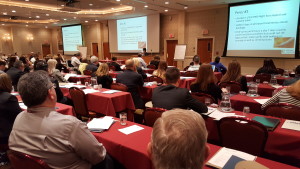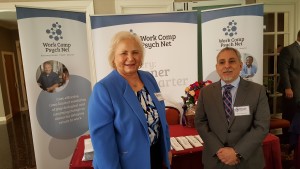It has been my experience that taking an extensive history from an injured client about a head injury has to be more than just “what happened, where did you hit your head and what do you remember?”
One has to determine whether loss of consciousness occurred and, if so, for how long. If loss of consciousness was prolonged, has the injured worker experienced Post Traumatic Amnesia? Post Traumatic Amnesia refers to the time the head injury happened until when the patient is laying down consistent, recoverable memories. While head-injured workers may have islands of memory during this period, they often do not retain their memories consistently. Understanding and evaluating this is vital to providing the injured worker the appropriate services and treatment.
A real-life example will help to understand what I mean.
A patient recently was referred to me secondary to depression from a workrelated accident. The history provided to me was that the worker had slipped and fallen at work. When she was delayed in returning to work, a neurological evaluation concluded that her overall presentation was more impaired than would be expected for the type of injury she had suffered – a simple slip and fall. The suggestion then was that her problem was more psychological than neuropsychological or phsyical.
In our initial session, I took a very extensive and detailed history of the actual events . The accident report said she slipped on water and fell in the hallway and had been out of work since then. The history was woefully incomplete. It did not tell me anything about what kind of fall, what was going on surrounding the event and what happened after the event. From talking with her, this is what I learned and what should have been in the history I’d been given: She was a kindergarten teacher. She was walking 20+ kindergarteners in a line down a hallway. This was the first week of school and the children did not know what to do, so she had to help them stay together in a line in order to follow her . This was when she slipped on a puddle of water from a nearby water fountain, fell on the floor, hit her head and lost consciousness. I asked her what she remembered when she awakened into consciousness. She told me there was someone standing over her asking her something.
She was cloudy about the event. I asked if there was anyone in the hall? “No.” Any children? “No.” Any other teachers? “No.” Any nurse? “No.”
So, I learned that when she regained consciousness, the hallway was cleared of everyone with the exception of the person who was standing over her trying to talk to her.
If you extrapolate from that to try to determine the duration of her loss of consciousness, you would conclude that from the time she slipped, fell and lost consciousness, the following would most likely have occurred : The kindergarteners would have been upset, anxious and crying. Another teacher would have had to notice that, gather the children and take them into another room. This would have taken at least a few minutes. Meanwhile, a colleague would presumably try to get the nurse. And, finally, while all of this was going on, someone would stay with her. This would be the person who was standing over her trying to talk to her when she awakened from her loss of consciousness.
This history now suggested that at the very least, she had lost consciousness for around 10-15 minutes and awakened to a vague sense of someone asking if she were all right. She told me she does not remember what she replied. She thinks she said she was okay. She was confused, dazed and disoriented.
There was no ambulance called, and she was sent home. She slept the rest of the weekend. While she had ‘islands of memory” over the next couple of weeks, she was not laying down consistent memories , suggesting a protracted Post Traumatic Amnesia.
Clinically, all of this presented a very different picture from the one I had been given initially. From a simple slip and fall with a neuropsychological testing that looked too impaired for someone who just had a slip and fall, this woman clearly had a head injury. She had a positive loss of consciousness of 10-15 minutes, islands of memory and Post Traumatic Amnesia for a couple of weeks.
My report to the case manager was that this was a woman who had suffered a very serious injury. By the time she got to me, she had been struggling for weeks with no services for the head injury. Her deficits included neurocognitive dysfunction, post-traumatic vestibular dysfunction and post-traumatic visual dysfunction. Much of the delay in treatment had to do with an initial assessment in which the history was incomplete and the conclusions less than accurate. If a complete history had been taken at the beginning, she could have been helped with these issues and would have improved more rapidly. The accident analysis and narrative failed this woman and she paid the price.
The bottom line to this is that we at WCPN know the importance of taking a very detailed history. Of course, this is important for any accident, but even more so for accidents involving head injuries, which by their very nature are psychologically problematic. For us, getting the history right is the first essential step in treating our patients sooner, faster,smarter.

